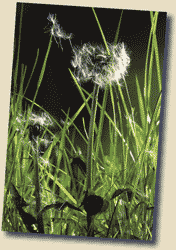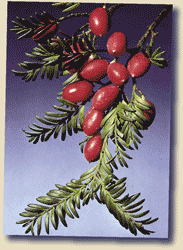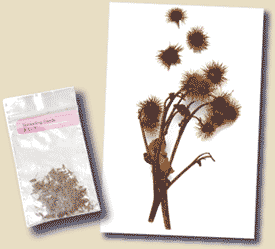| Approach: One
to one |
Level:
Year 4
and year 8 |
|
| Focus:
Plant
adaptation
|
| Resources:
3 pictures, bidibid
seeds |
 |
1.1Mb |
|
|
| Questions/instructions:
In this activity we’ll
be talking about how different seeds are spread. |
|
%
responses
2003 ('99) |
| y4
|
y8 |
| Show
student picture 1: dandelion. |
 |
|
|
|
1.
How do you think the dandelion’s seeds are helped to spread?
|
wind
|
57
(72) |
86
(82) |
|
If necessary tell student that dandelion seeds are spread by the
wind. |
|
|
2.
What is special about the way dandelion seeds are made that help them
get spread by the wind?
|
lightness
|
20
(30) |
36
(35) |
fluffy
bits to get caught by wind |
20
(26) |
35
(26) |
parachute/umbrella
effect for landing |
6
(9) |
18
(14) |
3.
What might be good about seeds being spread by the wind?
|
can
travel a long way/land in good growth environment |
17
(19) |
36
(36) |
other
valid, well-explained reason |
11
(20) |
13
(10) |
|
Show student picture 2: miro berry. |
 |
|
|
|
4.
How might the seeds of the miro berry be spread?
|
eaten
and spread in bird or animal droppings |
2
(6) |
18
(17) |
eaten
by animals/birds |
10
(14) |
23
(17) |
by
animals/birds |
5 (10) |
11
(15) |
| If
necessary tell student that miro berry seeds are sometimes eaten by birds
and other animals and the seeds are spread in the droppings. |
|
|
5.
What is special about the way berry seeds are made that help them get
spread by birds or other animals?
|
colour
to attract bird |
9
(11) |
22
(36) |
nice
flavour, good food |
16
(21) |
26
(36) |
hard
seeds that survive being eaten/digested |
1
(4) |
9
(4) |
6.
What might be good about seeds being spread in bird or other animal droppings?
|
can
travel a long way/land in good growth environment
|
11
(11) |
32
(28) |
droppings
fertilise seeds |
5
(11) |
13
(17) |
other
valid, well-explained reason |
7
(7) |
11
(7) |
Show
student picture 3:
bidibid and packet of bidibid seeds. |
 |
|
|
|
7.
These seeds belong to the bidibid family. How do you think bibibid seeds
are spread?
|
caught
on moving creatures |
9
(15) |
38
(45) |
| If
necessary tell student that the seed clings to animals or clothing. |
|
|
8.
What is special about the way bibibid seeds are made that help them get
spread by clinging to fur or clothing?
|
hooks/barbs
grab stongly onto fabric/fur (hard to get off)
|
2
(5) |
9
(6) |
prickles/spikes
get into fabric/fur (but relatively easily brushed
off) |
46
(65) |
53
(59) |
9.
What might be good about being spread by clinging to animal fur or clothing?
|
can
travel a long way/land in good growth environment |
13
(26) |
38
(32) |
other
valid, well-explained reason |
5 (2) |
8
(10) |
10.
What might be not so good about seeds being spread by the wind, in animal
droppings or on animal fur?
|
a
lot end up in places where they won’t grow well |
4
(10) |
16
(15) |
they
are a nuisance; end up in places where they are not wanted |
23
(24) |
46 (36) |
| |
|
|
Total
score:
|
11
–16 |
1
(3) |
12
(12) |
8–10 |
5 (11) |
29
(30) |
5–7
|
18
(31) |
34
(28) |
2–4
|
51
(43) |
19
(20) |
0–1
|
25
(12) |
6 (10) |
Commentary
This task was difficult for most year 4 students, with only 24 percent
getting more than one quarter of the maximum score. By contrast, 75 percent
of year 8 students achieved that. There was no meaningful change between
1999 and 2003 for year 8 students, but a clear decline in performance
of year 4 students. |